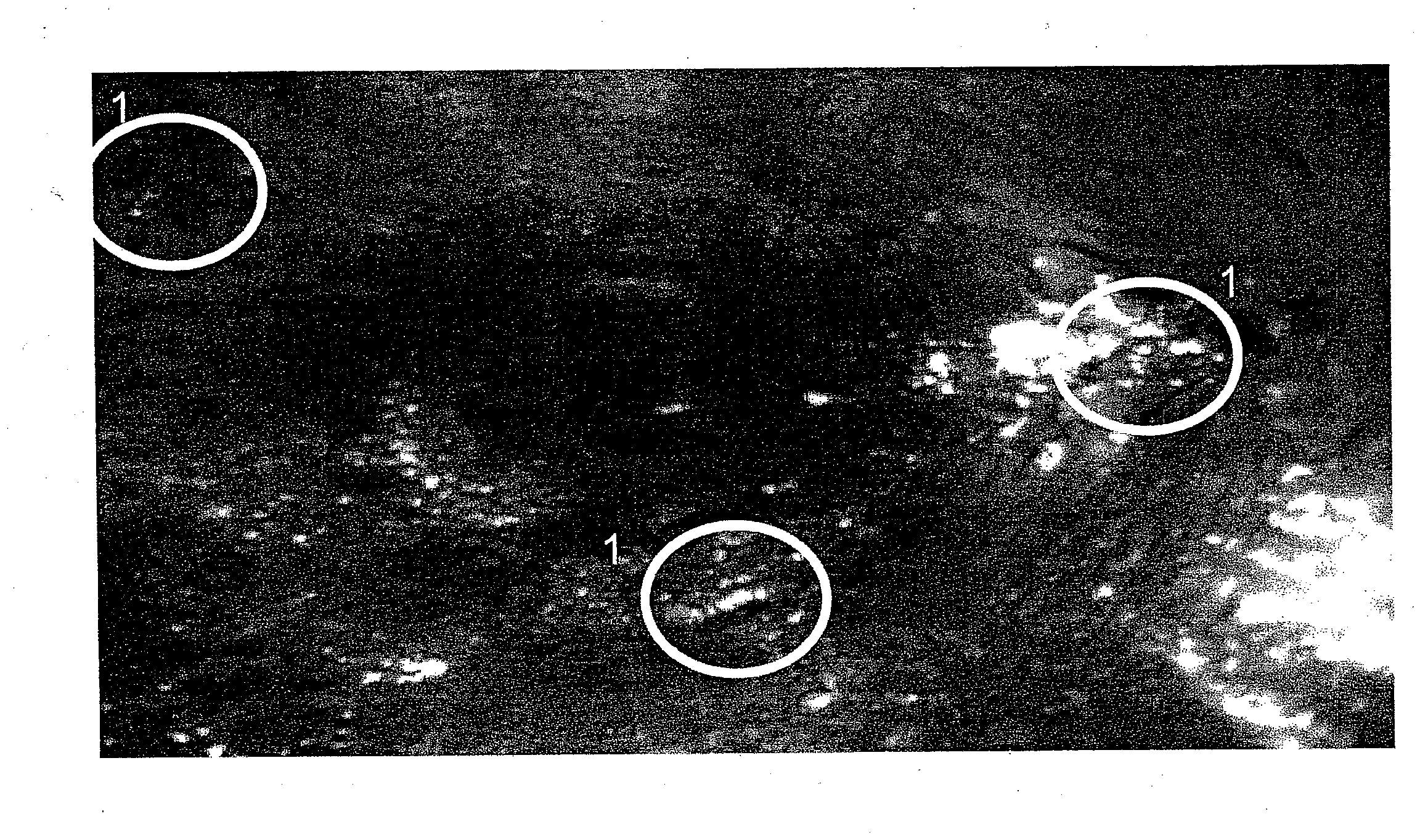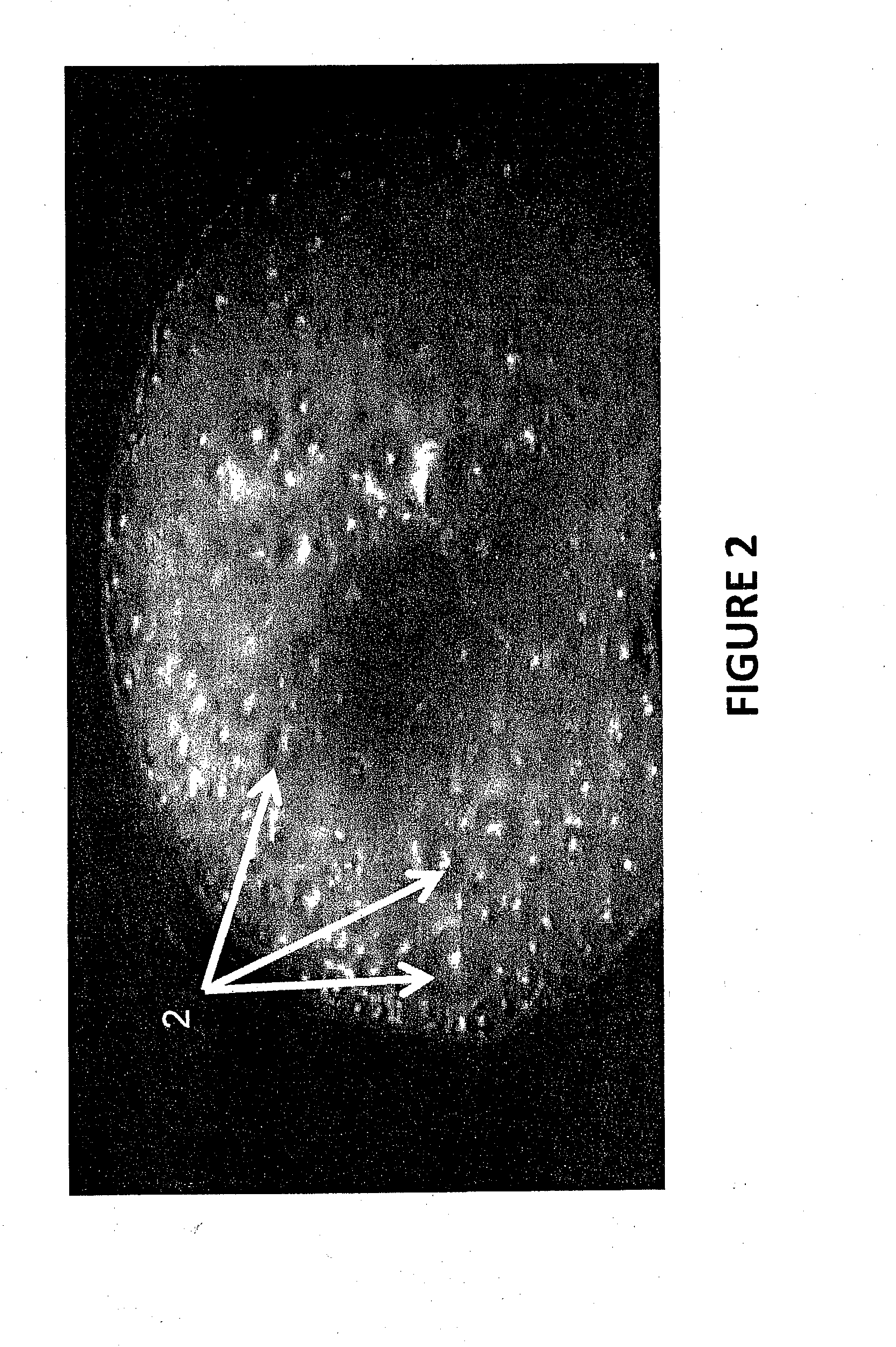Compositions and methods for enhanced hydrocarbon recovery
a technology of enhanced hydrocarbon recovery and composition, which is applied in the field of composition and methods for enhanced hydrocarbon recovery, can solve the problems of only being applicable and costly with thermal and miscible methods, and achieve the effects of increasing flow, production and/or recovery, and extending the life of peroxygen
- Summary
- Abstract
- Description
- Claims
- Application Information
AI Technical Summary
Benefits of technology
Problems solved by technology
Method used
Image
Examples
example 1
[0214]Three oil wells, each approximately 400 ft deep located in a shallow stranded oil field in South, Texas were treated to eliminate clay, asphaltene, paraffin, and biological films that coated the inside of the well casing, clogged perforations in the well casing, and that severely reduced permeability in the near-field extending out from the wellbore into the formation, all contributing to decreasing the ability of oil to flow into these wells. Each well was treated with a range of 20 to 300 gallons treatment solution comprised of a mixture of Component A, Component B, and produced water. For some of the treatments, following the chemical injection, a well bore volume of formation water previously produced from this well was injected into the well to displace treatment solution into the well bore near field.
[0215]The diluted concentrations of treatment solutions applied in this example are as follows:
Wellbore Treatment: Component A 1%-5%; Component B 1%-4%
Well Near-Field Treatm...
example 2
[0222]Composition creating secondary porosity and increased permeability at 70 degrees F. in a core of sandstone material from a heavy oil subterranean formation.
[0223]The procedure was as follows: Tightly confine a 1 Kg sample of hydrocarbon bearing sandstone material in a section of steel pipe. Regional analysis indicates the subterranean material to be characterized as a fine-grained sandstone containing high percentages of clay minerals consisting of kaolinite, illite, and smectite. Average porosity and permeability values reported for cores of the oil bearing subterranean formation are 26.5%, and 81 millidarcy (mD), respectively.
[0224]Add 250 ml of the diluted concentrations of the composition as a treatment solution applied in this example of 1% Component A and 3% Component B mixed with filtered water. Treatment solution was allowed to gravity flow into the core sample, and maintained at constant temperature of 70 to 72 degrees F. for 48 hours.
[0225]Starting 3 hours after appl...
example 3
[0226]Composition penetrating shale layer in a hydrocarbon bearing subterranean formation and generating sufficient in-situ gas and pressure at 82 degrees F. to fragment shale layer causing secondary porosity and increased permeability.
[0227]The procedure was as follows: Flush with water a 300 foot cased test wellbore to ensure the wellbore is free of any debris to the bottom of the well. Pump flush water from the test wellbore until evacuated. Introduce 150 gal of the diluted concentrations of the composition as a treatment solution applied in this example of 1.8% Component A and 8% Component B mixed with produced water previously obtained from the wellbore. The entire volume of treatment solution was allowed to gravity flow into the test wellbore. Following, a 100 gal water chase was slowly pumped (8 gpm) behind the treatment solution to displace the treatment solution from the wellbore and into the targeted subterranean formation containing a shale layer with no associated natura...
PUM
 Login to View More
Login to View More Abstract
Description
Claims
Application Information
 Login to View More
Login to View More - R&D
- Intellectual Property
- Life Sciences
- Materials
- Tech Scout
- Unparalleled Data Quality
- Higher Quality Content
- 60% Fewer Hallucinations
Browse by: Latest US Patents, China's latest patents, Technical Efficacy Thesaurus, Application Domain, Technology Topic, Popular Technical Reports.
© 2025 PatSnap. All rights reserved.Legal|Privacy policy|Modern Slavery Act Transparency Statement|Sitemap|About US| Contact US: help@patsnap.com



